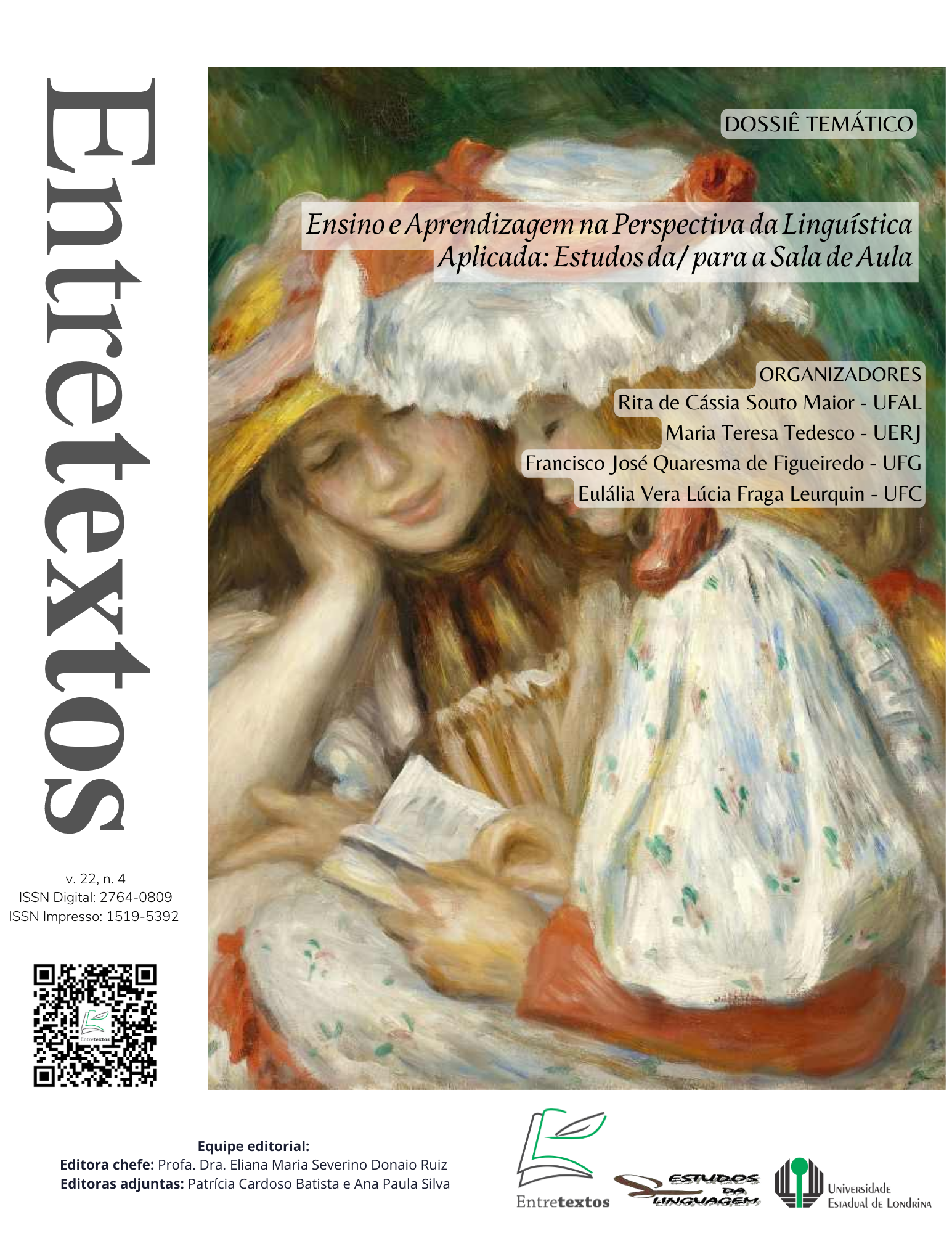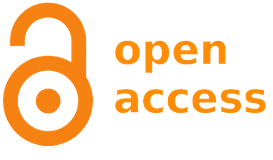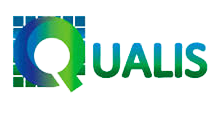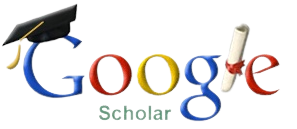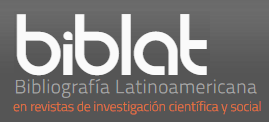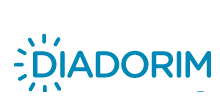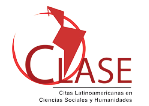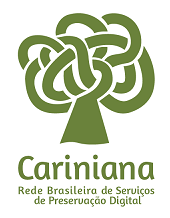Los beneficios de la corrección entre pares en el contexto de las clases virtuales de inglés
DOI:
https://doi.org/10.5433/1519-5392.2022v22n4Espp120-140Palabras clave:
peer correction, written task, collaborationResumen
In this paper, we present a study in which we investigate the benefits of peer correction in the context of English virtual classes. Two teenage students from an English course named Freeenglish were the participants in this qualitative research. They participated in a collaborative methodology of peer correction tasks (ARAÚJO; Author 2, 2015; DILLENBOURGH, 1999; DONATO, 1994) proposed by their teacher. To do so, the participants had to correct each other's written text and share feedback as part of a task during their English virtual classes on the Google Meet platform. As a theoretical foundation, we used the sociocultural theory, collaborative learning and teaching processes and studies about peer correction. The results show that the peer correction methodology proved effective in virtual classroom environments. Students could use different technological resources to exchange information about their texts (files, chatrooms on the Google Meet platform, WhatsApp, mobile phones, etc.), which favored interaction between them. We also demonstrate, through data analysis, that students provided very suitable input to each other during the correction task to make the texts more correct. Besides the relevant correction, participants could also develop a variety of communication skills as they were very engaged in talking about themselves.
Descargas
Citas
AMORES, M. J. A new perspective on peer-editing. Foreign Language Annals, Medford, v. 30, n. 4, p. 513-522, 1997. DOI: https://doi.org/10.1111/j.1944-9720.1997.tb00858.x
ANTÓN, M.; DICAMILLA, F. J. Socio-cognitive functions of L1 collaborative interaction in the L2 classroom. The Modern Language Journal, Medford, v. 83, n. 2, p. 233-247, 1999. DOI: https://doi.org/10.1111/0026-7902.00018
ARAÚJO, M. A. F.; FIGUEIREDO, F. J. Q. Interação e colaboração no processo de escrita e reescrita de textos em língua inglesa. Revista Desempenho, Brasília, v. 2, n. 29, p. 1-23, 2018.
BARTRAM, M.; WALTON, R. Correction: a positive approach to language mistakes. London: Language Teaching Publications, 1994.
BENSON, B. Scaffolding (coming to terms). English Journal, New York, v. 86, n. 7, p. 126-127, 1997. DOI: https://doi.org/10.2307/819879
BROOKS, F. B.; DONATO, R. Vygotskyan approaches to understanding foreign language learner discourse during communicative tasks. Hispania, Lubbock, v. 77, p. 262-274, 1994. DOI: https://doi.org/10.2307/344508
BRUFFEE, K. A. Collaborative learning: higher education, interdependence, and the authority of knowledge. London: The Johns Hopkins University Press, 1999. DOI: https://doi.org/10.56021/9780801859731
CARSON, J. G.; NELSON, G. L. Writing groups: cross-cultural issues. Journal of Second Language Writing, Amsterdan, v. 3, n. 1, p. 17-30, 1994. DOI: https://doi.org/10.1016/1060-3743(94)90003-5
CONNOR, U.; ASENAVAGE, K. Peer response groups in ESL writing classes: how much impact on revision? Journal of Second Language Writing, Amsterdam, v. 3, n. 3, p. 257-276, 1994. DOI: https://doi.org/10.1016/1060-3743(94)90019-1
COSTA, A. C.; SILVA, I. B. G.; SANTOS, L. N. S.; MORAIS, L. M. S. Educação e inovação: práticas educacionais inovadoras com o uso das tecnologias. Goiânia: Ed. IFGoiano, 2022.
DELLAGNELO, A. C. K.; TOMITCH, L. M. B. Preferências de alunos-escritores em L2 com relação a estratégias de revisão de texto. Linguagem e Ensino, Pelotas, v. 2, n. 1, p. 73-86, 1999.
DILLENBOURGH, P. What do you mean by collaborative learning? collaborative learning: cognitive and computational approaches. Oxford: Elsevier, 1999. Available at: https://telearn.archives-ouvertes.fr/hal-00190240/document. Access on: 17 jul. 2020.
DONATO, R. Collective scaffolding in second language learning. In: LANTOLF, J. P.; APPEL, G. (ed.). Vygotskian approaches to second language learning. Norwood: Ablex Publishing Company, 1994. p. 33-56.
EHRMAN, M. E.; DÖRNYEI, Z. Interpersonal dynamics in second language education: the visible and invisible classroom. Thousand Oaks: SAGE Publications, 1998.
FIGUEIREDO, F. J. Q. (org.). Formação de Professores de Línguas Estrangeiras: Princípios e Práticas. Goiânia: Editora UFG, 2012.
FIGUEIREDO, F. J. Q. A aprendizagem colaborativa de línguas. Goiânia: Editora UFG, 2006.
FIGUEIREDO, F. J. Q. Aprendendo com os erros: uma perspectiva comunicativa de ensino de línguas. Goiânia: Editora UFG, 1997.
FIGUEIREDO, F. J. Q. Aprendizagem de uma segunda língua: a relação erro X comunicação. In: BIGONJAL-BRAGGIO, S. L. (org.). Contribuições da linguística para o ensino de línguas. Goiânia: Editora UFG, 1999.
FIGUEIREDO, F. J. Q. Correção com os pares: os efeitos do processo da correção dialogada na aprendizagem da escrita em língua inglesa. 2001. 340 f. Tese (Doutorado em Linguística Aplicada) – Faculdade de Letras, Universidade Federal de Minas Gerais, Belo Horizonte, 2001.
FIGUEIREDO, F. J. Q. Os possíveis benefícios do uso de um formulário de orientação na realização de atividades de correção com os pares em LE. Signótica, Goiânia, v. 17, n. 2, p. 191-214, jul./dez. 2005.
FIGUEIREDO, F. J. Q. Revisão colaborativa de textos escritos em língua inglesa: semeando a interação. Trabalhos em Linguística Aplicada, Campinas, v. 39, p. 105-129, 2002.
FIGUEIREDO, F. J. Q. Vygotsky: a interação no ensino/aprendizagem de línguas. São Paulo: Editora Parábola, 2019.
FIGUEIREDO, F. J. Q.; SABOTA, B. R. Em busca da leitura colaborativa na aula de L2. Signótica, Goiânia, v. 14, p. 27-59, 2002.
HALL, J. K. Classroom interaction and language learning. Ilha do Desterro, Florianópolis, n. 41, p. 17-39, 2001.
HANJANI, A. M. Collective peer scaffolding, self-revision and writing progress of novice EFL learners. Tehran International Journal of English Studies, Murcia, v. 19, n. 1, p. 41-57, 2019. DOI: https://doi.org/10.6018/ijes.331771
JOHNSON, D. M. Approaches to research in second language learning. New York: Longman, 1992.
KAMBERI, L.; AMETI, M.; URLICA, A. A. D.; COROAMA-DORNEANU, L. I.; STEFANOVIC, S. The relevance of peer feedback in EFL classes for tertiary language learners. International Journal for Quality Research, Belgrado, v. 15, n. 3, p. 727-732, 2021. DOI: https://doi.org/10.24874/IJQR15.03-03
KESSLER, C. (ed.). Cooperative language learning: a teacher's resource book. New Jersey: Prentice Hall Regents, 1992.
KINSELLA, K.; SHERAK, K. Designing ESL classroom collaboration to accommodate diverse work styles. In: REID, J. M. (ed.). Understanding learning styles in the second language classroom. New Jersey: Prentice Hall Regents, 1998. p. 85-99.
LANTOLF, J. P. (ed.). Sociocultural theory and second language learning. Hong Kong: Oxford University Press, 2000.
LANTOLF, J. P.; ALJAAFREH, A. Second language learning in the zone of proximal development: a revolutionary experience. International Journal of Educational Research, Lagos, v. 23, p. 619-632, 1995. DOI: https://doi.org/10.1016/0883-0355(96)80441-1
LANTOLF, J.; APPEL, G. Theoretical framework: an introduction to Vygotskian perspectives on second language research. In: LANTOLF, J.; APPEL, G. (ed.). Vygotskian approaches to second language research. New Jersey: Ablex Publishing Corporation, 1994. p. 1-32.
LIU, J.; HANSEN, J. G. Peer response in second language writing classrooms. Ann Arbor: The University of Michigan Press, 2002. DOI: https://doi.org/10.3998/mpub.8952
LONG, M. H.; PORTER, P. A. Group work, interlanguage talk, and second language acquisition. TESOL Quarterly, Hoboken, v. 19, n. 2, p. 207-228, 1985. DOI: https://doi.org/10.2307/3586827
MANGELSDORF, K. Peer reviews in the ESL composition classroom: what do the students think? ELT Journal, Oxford, v. 46, p. 274-284, 1992. DOI: https://doi.org/10.1093/elt/46.3.274
MATUSOV, E. Intersubjectivity without agreement. Mind, Culture, and Activity, Philadelphia, v. 3, n. 1, p. 25-45, 1996. DOI: https://doi.org/10.1207/s15327884mca0301_4
MCGROARTY, M. E.; ZHU, W. Triangulation in classroom research: a study of peer revision. Language Learning, Trowbridge, v. 47, n. 1, p. 1-43, 1997. DOI: https://doi.org/10.1111/0023-8333.11997001
MELLO, H. A. B. “O português é uma alavanca para que eles possam desenvolver o inglês”: eventos de ensino-aprendizagem em uma sala de aula de ESL de uma “escola bilíngüe”. 2002. Tese (Doutorado em Linguística Aplicada) – Instituto de Estudos da Linguagem, Universidade Estadual de Campinas, São Paulo, 2002.
MENDONÇA, C. O.; JOHNSON, K. E. Peer review negotiations: revision activities in ESL writing instruction. TESOL Quarterly, Hoboken, v. 28, n. 4, p. 745-769, 1994. DOI: https://doi.org/10.2307/3587558
NEWKIRK, T. Direction and misdirection in peer response. College Composition and Communication, New York, v. 35, n. 3, p. 301-311, 1984. DOI: https://doi.org/10.2307/357458
OHTA, A. S. Rethinking interaction in SLA: developmentally appropriate assistance in the zone of proximal development and the acquisition of L2 grammar. In: LANTOLF, J. P. (ed.). Sociocultural theory and second language learning. Hong Kong: Oxford University Press, 2000. p. 51-78.
OLIVEIRA, M. K. Vygotsky: aprendizado e desenvolvimento - um processo sócio-histórico. São Paulo: Scipione, 2001.
OLIVEIRA, V. G.; LAGO, N. A. Beyond the text: crenças de uma aluna do nível pré-intermediário acerca do processo de escrita - um estudo de caso. Revista Intercâmbio, São Paulo, v. 25, p. 173-189, 2012.
OXFORD, R. Cooperative learning, collaborative learning, and interaction: three communicative strands in the language classroom. The Modern Language Journal, Medford, v. 81, n. 4, p. 443-456, 1997. DOI: https://doi.org/10.1111/j.1540-4781.1997.tb05510.x
PAIVA, V. L. M. O. Manual de pesquisa em estudos linguísticos. São Paulo: Parábola, 2019.
PERRET-CLERMONT, A. N. Social interaction and cognitive development in children. New York: Academic Press, 1980.
PICA, T. Research on negotiation. Language Learning, Trowbridge, v. 44, n. 3, p. 493-527, 1994. DOI: https://doi.org/10.1111/j.1467-1770.1994.tb01115.x
PRABHU, N. S. Second language pedagogy. Oxford: Oxford University Press, 1987.
SHIELD, L.; WEININGER, M. J. Collaboration in a Virtual World: Groupwork and the distance language learner. In: DEBSKI, R.; LEVY, M. (ed.). WORLDCALL: global perspectives on computer-assisted language learning. Lisse: Swets & Zeitlinger B. V., 1999. p. 99-116.
SOUSA, L. P. Q.; TIRABOSCHI, F. F.; LAGO, N. A.; FIGUEIREDO, F. J. Q. Aprendizagem colaborativa de língua Inglesa: algumas reflexões a partir de interações entre pares. Trabalhos em Linguística Aplicada, Campinas v. 58, n. 1, p. 259-286, jan./abr. 2019 DOI: https://doi.org/10.1590/010318138653439430941
SPEAR, K. Sharing writing: peer response groups in english classes. Portsmouth: Boyton/Cook Publishers, 1988.
SWAIN, M. Focus on form through conscious reflection. In: DOUGHTY, C.; WILLIAMS, J. (ed.). Focus on form in classroom second language acquisition. Cambridge: Cambridge University Press, 1998. p. 64-82.
SWAIN, M. The output hypothesis and beyond: Mediating acquisition through collaborative dialogue. In: LANTOLF, J. P. (ed.). Sociocultural theory and second language learning. Hong Kong: Oxford University Press, 2000. p. 97-114.
SWAIN, M. Three functions of output in second language learning. In: COOK, G.; SEIDLHOFER, B. (ed.). Principle & practice in applied linguistics. Oxford: Oxford University Press, 1995. p. 125-144.
SWAIN, M.; LAPKIN, S. Interaction and second language learning: two adolescent French immersion students working together. The Modern Language Journal, Medford, v. 82, n. 3, p. 320-337, 1998. DOI: https://doi.org/10.1111/j.1540-4781.1998.tb01209.x
TINZMANN, M. B.; JONES, B. F.; FENNIMORE, T. F.; BAKKER, J.; FINE, C.; PIERCE, J. What is the collaborative classroom? Washington: North Central Regional Educational Laboratory, 1990. Available at: https://www.researchgate.net/publication/251574844_What_Is_the_Collaborative_Classroom. Access on: 9 Oct. 2003.
VYGOTSKY, L. S. Consciousness as a problem in the psychology of behavior. Soviet Psychology, Oxfordshire, v. 17, p. 3-35, 1979. DOI: https://doi.org/10.2753/RPO1061-040517043
VYGOTSKY, L. S. The development of higher forms of attention in childhood. In: WERTSCH, J. V. (ed.). The concept of activity in soviet psychology. New York: M. E. Sharpe, 1981a. p.189-240.
VYGOTSKY, L. S. The genesis of higher mental functions. In: WERTSCH, J. V. (ed.). The concept of activity in Soviet psychology. New York: M. E. Sharpe, 1981b. p.144-188.
VYGOTSKY, L. S. Pensamento e linguagem. São Paulo: Martins Fontes, 1993.
VYGOTSKY, L. S. A formação social da mente: o desenvolvimento dos processos psicológicos superiores. São Paulo: M. Fontes, 1998.
WELLS, G. The zone of proximal development and its implications for learning and teaching. In: WELLS, G. (ed.). Dialogic inquiry: towards a sociocultural practice and theory of education. New York: Cambridge University Press, 1999. p. 313-334. DOI: https://doi.org/10.1017/CBO9780511605895.012
WIERSEMA, N. How does collaborative learning actually work in a classroom and how do students react to it? A brief reflection. Mexico City: ERIC, 2002. Available at: https://files.eric.ed.gov/fulltext/ED464510.pdf. Access on: 9 Oct. 2015.
WOOD, D.; BRUNER, J. S.; ROSS, G. The role of tutoring in problem solving. Journal of Child Psychology and Psychiatry, Oxford, v. 17, p. 89-100, 1976. DOI: https://doi.org/10.1111/j.1469-7610.1976.tb00381.x
ZHANG, S. Reexamining the affective advantage of peer feedback in the ESL writing class. Journal of Second Language Writing, Amsterdam, v. 4, n. 3, p. 209-222, 1995. DOI: https://doi.org/10.1016/1060-3743(95)90010-1
Descargas
Publicado
Cómo citar
Número
Sección
Licencia
Derechos de autor 2023 Lidia Maria Dos Santos Morais, Francisco José Quaresma de Figueiredo , Neuda Alves do Lago

Esta obra está bajo una licencia internacional Creative Commons Atribución 4.0.
Entretextos adota a Licença Creative Commons Attribution 4.0 International, portanto, os direitos autorais relativos aos artigos publicados são do(s) autor (es).
Sob essa licença é possível: Compartilhar - copiar e redistribuir o material em qualquer suporte ou formato. Adaptar - remixar, transformar, e criar a partir do material, atribuindo o devido crédito e prover um link para a licença e indicar se mudanças foram feitas.

